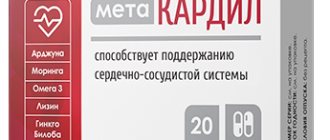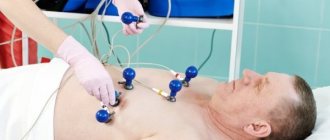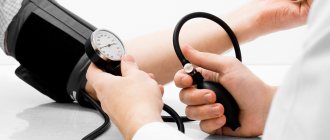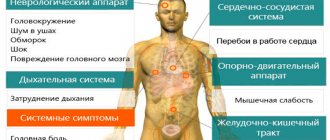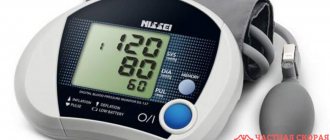(Health Center) There is a lot of talk about high blood pressure (hypertension). But low blood pressure (hypotension) seems to be considered a minor problem. The number of risks associated with hypotension is much less than with hypertension. However, those whose blood pressure is consistently below normal often feel tired and overwhelmed. For such people, knowing the possible causes of hypotension, and especially knowing how to stabilize low blood pressure, means a significant improvement in quality of life.
Causes of low blood pressure and ways to solve the problem
Low blood pressure causes lethargy and fatigue, accompanied by dizziness, decreased ability to concentrate and thus can significantly worsen your well-being. Doctors often tell hypotensive patients that low blood pressure is not as serious a problem as hypertension, and therefore nothing needs to be done.
But for anyone who would like to feel better, such words, of course, are of little use. Therefore, we will tell you about the possible causes of low blood pressure, which even doctors often do not think about, as well as how you can increase low blood pressure.
Low blood pressure - less than 100/60 mmHg
As you know, when measuring blood pressure, two indicators are distinguished: systolic and diastolic pressure.
First, the systolic blood pressure is indicated. This pressure occurs when the heart pumps blood into the arteries. It is always higher than diastolic pressure.
The second indicator is diastolic blood pressure. This is the pressure in the blood vessels between two contractions of the heart, that is, at the moment when the heart is not pumping blood.
Healthy blood pressure, according to today's understanding, is approximately 120/80 mmHg. Indicators above 140/90 mm Hg. Art. referred to as high blood pressure. If the pressure gauge regularly shows less than 90/60 mmHg. Art. and even less than 100/60 mmHg. Art., then they talk about low blood pressure. If only one of the two indicators is very low, this is already enough for the development of the corresponding symptoms.
During pregnancy
Low blood pressure during this period should be considered as part of the development of pathology. And in order to present a more complete picture of the causes and possible consequences of this phenomenon, the process must be divided as follows:
- The first possible cause of low blood pressure is pregnancy itself. That is, it provokes this phenomenon due to early toxicosis that occurs in the first half of the term.
- The second option is that the cause of hypotension is associated with complications associated with pregnancy - this could be a threatened or already begun abortion, accompanied by uterine bleeding. In other cases, blood pressure usually increases.
- Hypotension - already occurred before pregnancy and did not disappear when it occurred. Under such circumstances, there is no threat to the future woman in labor. But serious complications can occur for the fetus. Since slow blood flow in the vessels also negatively affects the blood circulation of the fetus. Intrauterine hypoxia may occur, and this is fraught with very serious consequences.
Blood pressure is constantly changing
However, blood pressure fluctuates and values can change greatly in a short time, even between two heartbeats. The fact is that blood pressure depends on many factors: body position (whether a person is lying, standing or running), breathing rate, stress level, state of health, nutrition, what medications a person takes, and the time of day . For example, at night your blood pressure is usually very low. When we wake up, it increases quickly.
Low blood pressure is often a good sign
It is possible that a person’s blood pressure is often low, that is, less than 100/60 mmHg. Art., but I feel excellent and have no complaints. This means that this blood pressure is optimal and helps a person stay healthy as they age.
Athletes tend to have lower overall blood pressure and a slower heart rate than the average person. Non-smokers, those who are of normal weight and who eat healthily also tend to have low blood pressure (which is a good sign), while smokers, people who are overweight, have a poor diet and are sedentary often have low blood pressure. have to deal with high blood pressure.
However, if your blood pressure is constantly low and you do not feel in good shape, then your blood pressure is definitely TOO low and you need to start looking for the causes and solutions to the problem. You may be experiencing the symptoms listed below.
Classification of conditions accompanied by low blood pressure.
- Physiological hypotension is low blood pressure, which is a variant of the norm or is temporary.
- Hypotension as an individual variant of the norm, i.e., a feature of a given person that does not cause him discomfort.
- Hypotension due to increased training (in athletes).
- Hypotension is adaptive (in residents of highlands, tropics and subtropics).
- Pathological hypotension is a disease whose main manifestation is low blood pressure, a condition that requires diagnosis, mandatory treatment and observation.
- Neurocirculatory hypotension (primary, which is an independent disease, most often caused by impaired vascular tone and vascular function).
- Idiopathic orthostatic hypotension. An independent disease, the main symptom of which is a drop in pressure when changing body position.
- Symptomatic (secondary) hypotension:
- acute form (with shock, collapse, fainting, allergic reaction);
- chronic form;
- a form with severe orthostatic syndrome, that is, with severe dizziness when changing body position.
- Reduced blood pressure in diseases of the nervous system.
Symptoms of low blood pressure
Low blood pressure is manifested by the following symptoms:
- dizziness to the point of fainting,
- darkness before the eyes when standing up,
- visual impairment,
- noise in ears,
- headache,
- fatigue and decreased concentration,
- dyspnea,
- pallor,
- cold feet and hands.
A sudden drop in blood pressure can be dangerous. Even its decrease by only 20 mm Hg. Art. (eg, from 110 to 90 mm Hg in systole) sometimes causes dizziness and loss of consciousness because the brain does not receive enough blood as a result.
If blood pressure decreases as a result of significant blood loss (in an accident), serious infections or allergic reactions, low blood pressure can be life-threatening. Fortunately, this rarely happens.
How can you help yourself at home?
You can increase the pressure 90 to 50 yourself. But with further negative dynamics of the process, if the pressure drops further, you need to call an ambulance.
Before the arrival of doctors or as initial measures, the following must be done:
- Lie down, calm down. Do not make sudden movements. Moreover, do not jump out of bed.
- Take one tablet of a tonic: Citramon or aspirin. But no more, otherwise the pressure will jump sharply. The drugs do not act immediately, but after half an hour to forty minutes. One tablet in this period of time is enough. The daily maximum is 6 tablets.
- Drink coffee, tea or a salty product (of your choice) to normalize the condition.
- Assess and record pulse and blood pressure for reporting to the attending physician or paramedic upon arrival of the ambulance.
Before the ambulance arrives or until you feel better, you should avoid showers, baths, and excessive water consumption. The condition may worsen.
Types of low blood pressure
In general, low blood pressure conditions fall into three categories:
- Primary hypotension
In this case, the causes of hypotension are unknown. It is believed that slender young women often face this problem. This form of low blood pressure also occurs in people who lead a sedentary lifestyle. However, in general, this group includes all hypotensive patients whose causes of low blood pressure remain unclear from the standpoint of official medicine.
- Secondary hypotension
The adjective “secondary” means that hypotension is a consequence of another disease or the result of other known factors. This could be a hormonal imbalance (Addison's disease, low thyroid function), a side effect of medications taken, heart disease, or a phenomenon accompanying an infectious disease.
The advantage of secondary hypotension is that when the cause of low blood pressure is known, it is easier to find a solution.
- Orthostatic hypotension
This form of low blood pressure manifests itself primarily in the fact that when getting up from a lying or sitting position, you feel dizzy, your vision becomes dark, and you feel like you need to grab onto something to avoid falling.
When a person stands up, the blood naturally goes down to the legs. A healthy body easily compensates for this displacement: the blood vessels narrow, the heart begins to beat faster. Thanks to this, the brain is supplied with blood.
In people suffering from orthostatic hypotension, this regulatory mechanism is disrupted. Blood pressure drops, and in the worst case, the person loses consciousness.
This form of low blood pressure can be caused by various reasons. Blood pressure does not necessarily remain low all the time - it may only happen on some days or only during certain periods, for example during pregnancy, during extreme heat or after lying in bed for a long time. Diabetes, heart problems, certain neurological disorders, and varicose veins also—along with the medications listed below—may increase the risk of orthostatic hypotension.
Those diagnosed with orthostatic hypotension should rise very slowly. You should not get up immediately from a lying position: you must first sit down, sit for one or two minutes and only then get up.
Sometimes blood pressure drops immediately after eating. This form of hypotension is called postprandial hypotension.
Postprandial hypotension
In people with postprandial hypotension, too much blood flows into the digestive system after eating. Compensation mechanisms, which in a normal situation ensure blood supply to the brain as before, despite the digestion of food, do not work in this case.
Postprandial hypotension is often observed in hypertensive patients, which, of course, can be explained by incorrect dosage of drugs to lower blood pressure.
If you have postprandial hypotension, you should always eat only small portions and ensure that the food is healthy, nutrient-dense and does not contain isolated carbohydrates (sugar, white flour products).
Are such numbers dangerous with different pulse rates?
The pulse indicator plays an important role in determining the source of pathology.
It is necessary to consider it on a general basis, along with other symptoms accompanying a decrease in tonometer readings.
- Pulse less than 60. Severe bradycardia. Indicates a malfunction of the cardiovascular system. Poses a danger to health and life. A doctor's help is required, preferably quickly.
- Pulse 60-80. This is quite normal. This heart rate is considered desirable and does not pose a threat.
- Heart rate over 80 beats per minute. Tachycardia due to hypotension is a relatively common occurrence. Indicates damage to the heart muscle and requires urgent medical attention.
All indicators need to be assessed in the system. This is an axiom. It is impossible to draw conclusions from the pulse alone.
Causes of low blood pressure
Often it is not possible to find out the cause of low blood pressure. This may be unpleasant for patients, but does not have serious consequences - unlike patients with chronically high blood pressure.
However, often the doctor is the cause of low blood pressure, which is not thought about at all. Of course, not directly, but indirectly. Many people have had their blood pressure rise during a doctor's appointment at some time in the past. They were prescribed drugs to lower blood pressure, patients diligently took the pills, and it did not occur to them to check whether this was still necessary.
- Blood pressure lowering medications are the main cause of high blood pressure
In the summer of 2021, the results of a study on this topic were published. It covered more than 11,000 patients over the age of 70 years. 1,900 of them had low blood pressure. Imagine: 1,246 of them were taking blood pressure medications. Of those with the lowest blood pressure, 70 percent used such drugs.
Thus, in older people, the main cause of too low blood pressure is blood pressure-lowering medications.
Apparently, they are prescribed very often, without thinking about the fact that the patient's condition may change. Some people are prescribed other drugs over time (see point 2).
The interaction of medications is not always taken into account, and therefore a situation may arise when medications further reduce blood pressure, lowering it below a minimum. At the same time, it is precisely in older people that too low blood pressure often causes death and referral to the hospital - this fact was noted by the authors of the study.
Therefore, if, while taking medications to lower blood pressure, you feel unwell, often feel dizzy and weak, it is possible that the cause of this condition is not high blood pressure, but, on the contrary, too low blood pressure due to the medications. Consult your doctor about this!
The most well-known drugs that lower blood pressure include:
- diuretics (diuretics), such as furosemide and hydrochlorothiazide, which are prescribed for high blood pressure, but also for edema, heart and kidney failure and hyperkalemia (excess potassium),
- alpha blockers, such as prazosin,
- beta blockers such as atenolol.
- Medicines
In addition to special drugs, other drugs can reduce blood pressure and thus cause hypotension. Many of them were developed and are assigned to solve completely different problems.
- Medicines for Parkinson's disease, such as pramipexole, and products containing levodopa.
- Some (tricyclic) antidepressants, for example, doxepin, imipramine, etc.
- Viagra (sildenafil), especially in cases where nitroglycerin is also taken for heart support (against angina).
- Sedatives.
- Antihistamines.
- Pregnancy
During pregnancy, due to increased stress on the body, blood pressure can drop significantly. As a rule, blood pressure returns to normal, at the latest after childbirth.
- Heart problems
If the cause of too low pressure is heart problems, the matter is not limited to slight dizziness. Many other complaints also arise. Heart problems that can cause low blood pressure include bradycardia (very low heart rate), heart valve disease, myocardial infarction, or heart failure.
- Functional disorders of the thyroid gland
Reduced thyroid function can also cause low blood pressure. Because both conditions (low glandular function and hypotension) have similar symptoms, patients sometimes think they “only” have low blood pressure. But in fact, there may be a malfunction of the thyroid gland.
- Adrenal insufficiency
If adrenal function is weakened, low blood pressure may occur along with other symptoms. The adrenal glands, which sit directly on the kidneys, produce hormones including adrenaline and norepinephrine. Both of these hormones activate the body. When needed, they speed up the heart rate, improve blood flow to the muscles, promote the release of glucose and increase blood pressure.
In the case of chronic adrenal insufficiency, such an activating effect on blood pressure is absent, blood pressure becomes chronically low, and the person feels completely powerless.
- Dehydration
Dehydration (lack of water) is also a serious cause of low blood pressure. It occurs in those who consume too little fluid or lose a lot of fluid due to certain circumstances (such as diabetes, fever, vomiting, diuretic abuse, extreme sports without drinking). Even slight dehydration can cause weakness, dizziness and fatigue.
- Deficiency of essential substances
Lack of vitamin B12, folate (folic acid) or iron leads to anemia. The body loses its ability to produce enough red blood cells. As a result, anemia develops and blood pressure decreases. There is a feeling of weakness, loss of strength. Other B vitamins and vitamin C also improve blood pressure and can seriously help with low blood pressure.
Diagnosis and treatment
Considering the fact that hypotension can serve as a symptom of many diseases or be an independent pathology, an examination is necessary to exclude diseases that could lead to a decrease in pressure. In this regard, there is no strictly defined list of examinations. To understand why the patient has low blood pressure, a diagnostic plan is drawn up and prescribed strictly individually, taking into account the patient’s history and previous diseases.
When establishing the cause of the disease, therapy usually uses complex methods aimed at restoring and strengthening the vascular wall and treating the underlying disease, if required, strengthening the autonomic nervous system and immune processes. General stimulants are prescribed, for example, drugs containing caffeine.
Many herbal preparations, so-called “folk remedies,” also have a tonic effect, which can also help with low blood pressure (hypotension). Self-administration of such drugs, however, requires great caution, because the same substances can have different effects on different people. Sometimes a paradoxical reaction and deterioration of the patient's condition may occur.
You should not self-medicate for hypotension! Only a doctor can prescribe the drugs necessary for a particular patient after he has examined the patient and established the cause of hypotension and the characteristics of its course.
Low blood pressure: natural ways to improve your health
Even the list of possible causes already given shows that there are many ways to increase low blood pressure again. First you need to find out the cause of low blood pressure. When it is found, treatment begins.
This is not always easy: problems begin already in cases where low thyroid function or adrenal insufficiency is diagnosed. Often official data says that everything is fine, but a person feels completely different.
Adrenal insufficiency is detected by examining saliva. Specific measures should be discussed with a specialist in alternative medicine.
Contrast shower and Kneipp douches
Master the contrast shower and practice Kneipp douches. Yes, you can prescribe what is called hydrotherapy if your doctor agrees that it will help combat low blood pressure.
When dousing, the following must be taken into account. Warm water relaxes and relieves spasms, while cold water mobilizes. If you have low blood pressure, you should either use cold water or change the temperature of the water: this activates blood circulation and helps increase blood pressure.
Kneipp foot soaking is commonly practiced. To do this, cold water (temperature 20 degrees) is poured onto the foot from the knee, then directly onto the foot and again up the calf to the popliteal fossa, and then down again. After a warm shower, you can quickly douse yourself with cold water. If this is difficult for you, limit yourself to cold pouring on your feet.
Drink still water regularly
With low blood pressure, water helps not only from the outside, but also from the inside. If you are one of those people who often forgets to drink enough, the first thing you should do at the first symptoms of low blood pressure is drink a large glass of water. Often this is already enough.
As stated above, not drinking enough fluids can seriously aggravate, if not cause, low blood pressure. Therefore, regularly drink 30 ml per kilogram of weight per day. To do this, it is best to choose high-quality still or lightly carbonated water.
To enhance the effect of a glass of water for severe dizziness, cook vegetable broth and drink it or simply add a little salt to the water.
Check the level of vital elements in the body
Get tested for essential minerals and vital substances (vitamin B12, vitamin D, iron, zinc, etc.) and check whether your diet contains enough of the necessary elements. To do this, you can contact a healthy nutrition consultant. If in doubt or found to be deficient in specific substances, take appropriate nutritional supplements.
You can almost always take magnesium and a high-quality B vitamin complex, even without testing. Magnesium is a mineral that is involved in many reactions in the body and at the same time is present in insufficient quantities in modern food. Therefore, in most cases, taking it is only beneficial.
The same can be said about B vitamins. In addition, these vitamins dissolve in water, and therefore, in case of excess intake into the body, they are simply excreted in the urine. Along with vitamin B12, vitamin B5 is also especially important for low blood pressure: its deficiency can provoke hypotension.
Vitamin C deficiency is also a cause of low blood pressure. This is because vitamin C stimulates blood circulation, and therefore blood pressure.
General recommendations for nutrition for hypotensive patients
With hypotension, it is important to adjust both the diet and diet. There are several eating habits that contribute to high blood pressure:
- Eat more often, but in small portions. This will ensure a constant supply of energy and high tone.
- Drink more water. When dehydrated, the volume of circulating blood decreases and blood pressure drops. If a person drinks enough water, the blood volume will be larger and the blood pressure will be higher. You need to additionally increase the volume of fluid you drink in hot weather and during physical activity.
- Don't skip meals. Such omissions can provoke overeating, which will cause blood pressure to drop.
- Reduce alcohol consumption. It causes dehydration and may worsen hypotension.
To improve your health with hypotension, you need to change your diet as follows:
- Get enough salt from food. Hypotonic people can eat dishes with added sea or table salt, as well as canned vegetables, cheeses, and salted fish. This will help retain fluid in the body and increase blood volume to increase blood pressure. In this case, total salt consumption should not exceed 5 g per day.
- Drink caffeinated drinks. It is better if it is natural coffee, black or green tea. The caffeine they contain causes heart rate to increase and blood pressure to rise. This effect is temporary. It should not be overused: if a person drinks a lot of coffee or tea, it can have a bad effect on heart health. In addition, over time, tolerance to caffeine may develop, and it will no longer provide a tonic effect.
- Get more vitamin B9 and B12 from foods. Hypotension may be associated with anemia caused by a deficiency of B vitamins. Hypotonic people need to eat more foods containing vitamin B12 (fish, chicken, eggs, low-fat dairy products) and B9 (broccoli, asparagus, lentils and chickpeas, liver).
- Control your carbohydrate intake. If your diet contains a lot of foods containing carbohydrates, this can have a bad effect on your heart condition and cause anemia. In addition, such foods are quickly digested, after which the pressure drops sharply. To reduce the symptoms of anemia, you need a balanced diet. It should not be overloaded with foods containing easily digestible carbohydrates (sweets, starchy foods, sweet vegetables, fruits and dried fruits, foods and drinks with added sugar).
In addition to nutrition, healthy habits such as good sleep and exercise are important (Figure 2).
Figure 2. General recommendations for hypotensive patients. Source: MedPortal
List of foods you can eat for hypotension
Hypotonic people can eat almost any food, but it is important that the diet remains balanced. The menu can include:
- fresh vegetables and salads made from them with added salt (but it is better to limit the overall use of salt and control it so that it does not provoke swelling);
- boiled or baked vegetables;
- cereals;
- fruits, dried fruits in limited quantities;
- meat, poultry, fish (preferably low-fat so that the level of cholesterol in the blood does not increase);
- cheeses, dairy, fermented milk products;
- bread, pastries, sweets (in limited quantities);
- chocolate;
- coffee and other caffeinated drinks;
- eggs;
- spices, hot seasonings (including ginger, pepper).
Additional dietary restrictions may apply that are not related to high or low blood pressure. To take them all into account, it is better to create a menu together with your therapist or nutritionist.
Check your vitamin D levels
Vitamin D levels are particularly important: today in Central Europe there is usually not enough vitamin D, which is responsible for many chronic diseases. Vitamin D is the sun vitamin, that is, the vitamin that is formed in the skin when exposed to ultraviolet radiation. Food contains very little of it. Thus, a lack of sunlight usually means a deficiency of vitamin D.
Among other things, it is involved in regulating blood pressure. Therefore, a lack of this vitamin can contribute to low blood pressure. A study published in 2014 found that vitamin D deficiency increases orthostatic hypotension, especially in older people.
Rule out cryptopyrroluria
If you have symptoms other than low blood pressure, such as depression, hair loss, cracked lips, skin problems, or hormonal imbalances, consider getting tested for cryptopyrroluria.
This metabolic disorder also causes low blood pressure.
If the cause of low blood pressure cannot be found or if the condition does not improve despite all efforts to improve your lifestyle, it is usually recommended to simply move more or drink small amounts of alcohol or strong coffee. These measures, with the exception of physical activity, cannot be called healthy. Caffeine and alcohol have only a short-term effect, which means they cannot solve the problem for a long time.
However, there are methods and solutions that allow you to increase blood pressure not only reliably, but also without harm to health.
Fighting sleepiness
To avoid falling asleep on the go all day, it is recommended to drink coffee: in moderation, 2-3 cups. Hypotonic patients can indulge in this drink in the evenings without harm to their health. It does not cause insomnia, on the contrary: it returns a comfortable physical state and makes it easier to fall asleep. The next morning after drinking coffee, such people also feel more energetic.
But you need to be careful with green tea. Although it contains caffeine, other active substances in the drink dilate blood vessels, lowering blood pressure even more. For hypotension, strong black is more beneficial.
If you are very tired during the day, it is recommended to take a short rest: sleep for about 1–1.5 hours. This will allow the nervous system to reboot and give strength for the second half of the day. If this is not possible, it is advisable to have on hand collections of invigorating plants: lemongrass, eleutherococcus, ginseng root. In extreme cases, a can of energy tonic will do. But you can drink it no more than twice a month. Otherwise, the opposite effect will occur - vascular tone will decrease.
Rosemary - a remedy for low blood pressure
Rosemary essential oil is believed to effectively stimulate blood circulation, increase blood pressure and refresh the body, so much so that patients with high blood pressure should not take it.
However, those with low blood pressure can use rosemary oil in a variety of ways.
Buy a bottle of rosemary essential oil. If necessary, open it, bring it to your nose and inhale deeply. You can add a few drops to an aroma lamp.
In addition, rosemary essential oil is added to shower gel (1 drop per serving) or to the bath (so many drops for the scent of rosemary to be intense).
Camphor (Spanish) rosemary is best suited - it contains more camphor, which is the active ingredient in rosemary oil that affects blood pressure.
You can drink rosemary tea in the morning if you like it.
Licorice - a remedy for low blood pressure
Licorice is often used for coughs, as it has an antiviral effect, and for inflammation of the gastric mucosa, since this plant successfully fights even Helicobacter pylori.
Licorice contains so-called glycyrrhizic acid (also called glycyrrhizin), which, in addition to these effects, is known to increase blood pressure.
In 2015, the results of a study on one 65-year-old patient were published. She had high blood pressure, but it was stabilized with medication. Suddenly she needed emergency help: her blood pressure rose to 200/140 mmHg. Art.
Intravenous administration of blood pressure-lowering drugs did not produce results. The woman spent seven days in the hospital, five of them in the intensive care unit. Finally, the blood pressure was lowered with the help of three appropriate medications. It later turned out that this patient loved licorice candies, and ate two to four packages a day. Licorice is made from licorice root extract.
A similar study published the same year involved a 45-year-old woman who told her doctor that she had been experiencing hot flashes, sweating, and headaches for 4 months. It turned out that she had high blood pressure and her calcium levels were low. It was later learned that this patient drank six cups of licorice tea daily to wean herself off coffee. Two weeks after she stopped drinking this tea, the symptoms disappeared.
Thus, it is clear that licorice root can increase blood pressure. If your blood pressure is already high, it is better not to drink licorice tea. When blood pressure is too low, this tea in moderation can be very beneficial.
Glycyrrhizic acid from licorice root blocks certain enzymes, resulting in the activation of the stress hormone cortisol, which then increases blood pressure.
Today, experts do not recommend consuming more than 100 mg of glycyrrhizin per day - precisely because this substance affects blood pressure, and for most people it is already very high.
50 mg of licorice (some varieties) contains 100 mg of glycyrrhizin. If licorice contains more than 200 mg of glycyrrhizin per 100 g, in Germany it can only be sold in pharmacies and not as a sweet in supermarkets.
Many modern sweets containing licorice contain artificial flavors anyway and only a little real licorice, which means little glycyrrhizin. Therefore, licorice is a very unreliable source of glycyrrhizin if it is necessary to increase blood pressure. Exceptions are possible only if data on glycyrrhizin content are obtained from the manufacturer.
Dried licorice root, which is sold cut into slices in tea shops, contains 200 to 600 mg of glycyrrhizin per 5-15 g. Thus, you can brew a tea from 5-10 g of licorice root daily and drink it throughout the day.
It is officially not recommended to consume licorice products for more than four to six weeks, but this advice applies to all medicinal teas. Periodic breaks avoid addiction and prevent possible side effects.
The glycyrrhizin found in licorice, when taken over a long period of time, can actually cause symptoms in susceptible individuals that indicate elevated cortisol levels. These are, for example, accumulations of fluid, which are manifested by swelling in the face and joints of the feet, increased blood sugar levels, disturbances in the functioning of the heart and, of course, increased blood pressure, although for hypotensive patients this effect is desirable.
But two cups of licorice root tea a day won't cause any problems and will still help raise your blood pressure.
Prevention of hypotension in the elderly
To prevent the development of hypotension and related diseases, older people should follow a number of recommendations:
- Try not to overwork and avoid stress.
- Drink 1.5 to 2 liters of liquid per day.
- Be active and mobile.
- Take frequent walks in the fresh air.
- Eat more herbs, spices and salt.
- Do general strengthening exercises.
- Limit hot baths, replacing them with contrast showers.
- Reduce the amount of carbohydrates in food to prevent surges in blood pressure and blood sugar.
Tulsi - a remedy for low blood pressure
In 2013, the results of a study were published on the effects of the so-called holy basil (tulsi) on low blood pressure in women aged 18 to 30 years. Participants in the experiment were given juice from 15 mixed basil leaves twice a day. After mixing, the juice was filtered and a teaspoon of honey was added to it for sweetness.
After 30 days, it was found that the blood pressure, which had previously been too low, had increased significantly. Today tulsi is sold in stores and in our latitudes, which means you can stock up on this plant and make juice or smoothie from the leaves.
Medicinal herbs and plants such as marjoram, ginger, lovage and hyssop will also help you increase your blood pressure. They can be brewed or used in cooking, such as added to salads and sauces.
How does a constant decrease in SBP affect the patient's life prognosis?
The prognosis for low upper pressure is determined by the cause of hypotension. In the absence of serious concomitant cardiac pathology, kidney disease, or endocrine disorders, the prognosis is relatively favorable.
If low SBP is detected before the age of 25 years, there is a high probability of normalizing blood pressure using lifestyle correction. At older ages, patients are recommended to undergo a more thorough examination by a cardiologist, therapist and neurologist, drug therapy and physiotherapy.

